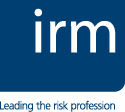 Whilst stronger control may improve performance in simple systems, this is not true in complex systems. A complex system cannot be controlled. However it can be influenced. And the more the system is able to adapt and learn, the greater the probability that it can be influenced or nudged into the desired state. Traditional understanding of governance and risk management has been dominated by process thinking, but in the extended enterprise we need to give at least as much attention to relationships, attitudes and behaviour.
Whilst stronger control may improve performance in simple systems, this is not true in complex systems. A complex system cannot be controlled. However it can be influenced. And the more the system is able to adapt and learn, the greater the probability that it can be influenced or nudged into the desired state. Traditional understanding of governance and risk management has been dominated by process thinking, but in the extended enterprise we need to give at least as much attention to relationships, attitudes and behaviour.
More rules, regulations and contracts are never the full answer for complex problems and can actually be counterproductive. A regime focused on enforcing compliance stifles any sense of ownership, constrains the initiative of individuals and teams and suppresses innovation and improvement – the very elements that fuel sustained success. Enquiries into both the banking collapse and failures of safeguarding for children in care have both concluded that improvement does not come from more procedures and tighter compliance but from addressing leadership, cultural and behavioural issues.
Our leadership model for the complex extended enterprise builds on a clear and authentic vision and values and takes advantage of curiosity to build trust and demonstrate courage in actions and behaviours. The model is shown diagrammatically in Figure 6 and its essential elements are:
BE CLEAR
In the world of the extended enterprise, the foundations for success are built on a compelling vision, clearly expressed, and on the alignment of explicit values that are constantly reinforced by the way that leaders demonstrate them in practice. The more powerful and attractive the vision, the more likely it is that followers will buy that vision and commit their personal energies to achieving it. But it must be sincere, sustained and aligned to motivations and values to succeed in the long term.
BE CURIOUS
Successful leaders of complex systems show a heightened sense of curiosity that simultaneously seeks new knowledge and new relationships from as many different contexts as possible. This helps create the learning, questioning and adapting system that can be guided to support the vision.
BE COURAGEOUS
The final tier of system leadership is therefore characterised by courage – the courage to rewrite the rule book in terms of personal behaviors, risk taking and the ability to face paradox and uncertainty by relying on others and working constructively with the energy of conflict.
Good governance cannot be imposed through compliance with standards but needs to be constantly revised and improved. This involves balancing good processes with wise judgement in a constant renewal process built on valuing diversity, developing self awareness and regular benchmarking.
CHARACTERISTICS
Seven characteristics of people who are successful in leading complex organisations
- They go out of their way to make new connections
- They adopt an open, enquiring mindset, refusing to be constrained by current horizons
- They embrace uncertainty and are positive about change – adopt an entrepreneurial attitude they draw on as many different perspectives as possible; diversity is not optional
- They ensure leadership and decision-making are distributed throughout all levels and functions
- They establish a compelling vision which is shared by all partners in the whole system
- They promote the importance of ethics and values and invest as much energy into relationships and behaviours as into delivering tasks.
Risk professionals who want to operate successfully in the extended enterprise will need to develop a range of capabilities including dealing with paradox and ambiguity, managing conflict, collaborative working, stakeholder engagement, risk communication and future scanning.
 CASE STUDY
CASE STUDY
Total Place was a public sector programme in the UK between 2009 and 2011. It supported 13 community initiatives which encouraged collaboration between multiple agencies to achieve better outcomes for individual service users and the wider community at a reduced total cost. Typical problems included childrens’ services, adult offenders leaving prison and elderly patients with mental health problems being discharged from acute hospital services. The new approach showcased many characteristics of whole system leadership. This included a strong vision focusing on the personal experience of service users, changes in service providers’ behaviour as they were empowered to act in the interest of the user, rather than their immediate organisation, and a deep understanding of the motivations and connections between all involved.
Bio:
(C) The IRM. IRM is the leading professional body for risk management. We are an independent, not-for-profit organisation that champions excellence in managing risk to improve organisational performance. For further information, please visit: www.theirm.org.